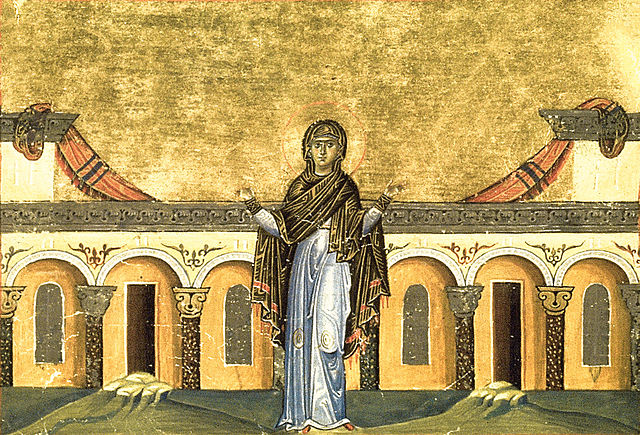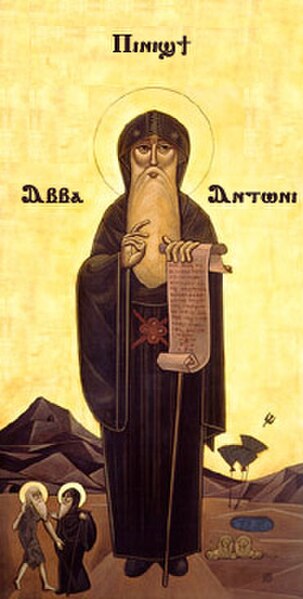Desert Mothers is a neologism, coined in feminist theology as an analogy to Desert Fathers, for the ammas or female Christian ascetics living in the desert of Egypt, Palestine, and Syria in the 4th and 5th centuries AD. They typically lived in the monastic communities that began forming during that time, though sometimes they lived as hermits. Monastic communities acted collectively with limited outside relations with lay people. Some ascetics chose to venture into isolated locations to restrict relations with others, deepen spiritual connection, and other ascetic purposes. Other women from that era who influenced the early ascetic or monastic tradition while living outside the desert are also described as Desert Mothers.
Desert Mothers Saint Paula and her daughter Eustochium with their spiritual advisor Saint Jerome—painting by Francisco de Zurbarán
Melania the Younger, from the Menologion of Basil II
Syncletica of Alexandria from the Menologion of Basil II
The Desert Fathers were early Christian hermits and ascetics, who lived primarily in the Scetes desert of the Roman province of Egypt, beginning around the third century AD. The Apophthegmata Patrum is a collection of the wisdom of some of the early desert monks and nuns, in print as Sayings of the Desert Fathers. The first Desert Father was Paul of Thebes, and the most well known was Anthony the Great, who moved to the desert in AD 270–271 and became known as both the father and founder of desert monasticism. By the time Anthony had died in AD 356, thousands of monks and nuns had been drawn to living in the desert following Anthony's example, leading his biographer, Athanasius of Alexandria, to write that "the desert had become a city." The Desert Fathers had a major influence on the development of Christianity.
Coptic icon of Anthony the Great
"Saint Macarius and a Cherub" from Saint Catherine's Monastery, Sinai, Egypt
Icon of Pachomius
Icon of Arsenius the Great, notable Desert Father







